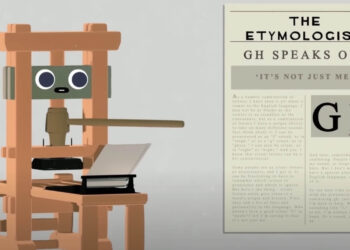
Nearly 20 years ago, Geoffrey Moore published his bellwether book, “Crossing the Chasm.” My updated edition was published in 1999, about 10 years ago. I took it down from my shelf recently to reflect on how it has aged.
In the book, Moore postulates that technology companies encounter a chasm between innovators and early adopters. Leaping this chasm, they then move across a bell curve of adoption with smaller chasms to cross between segments.
Underpinning his argument is a technology diffusion model that assumes a bandwagon of enthusiasts will convert neighbors to adopt technologies.
Now that publishers are clearly technology companies, how has this model changed over the years?
Perhaps most importantly, are we crossing fast enough? Have aspects of the model changed in ways that would cause a rethink — of approach, velocity, and choices?
A sense of the land crumbling away beneath our feet comes when you read announcements of journals shrinking their page counts due to the economic climate. And the American Chemical Society is shedding print slowly but surely in order to complete their leap across the chasm.
There’s a moment of equipoise between revenues and expenses that each publisher must judge in order to attempt the leap, but with revenues falling and variable expenses morphing into fixed expenses, a lot is changing all of a sudden.
Another pressure forcing decision-making is the rate of technology diffusion we are seeing today. Ten or 20 years ago, technologies were adopted more slowly — they were more centralized, more expensive, and less open. Now, devices like the iPhone can change operating systems in a week. Imagine if Windows had been able to put Windows XP on 75% of computers within a week of its release? Instead, Microsoft was only able to generate adoption rates between 12-15%, at best, during the first year of introducing XP or Vista. (Of course, it also helps that the iPhone OS is free.)
The rate of technology adoption due to wireless, 3G, and other bandwidth and integration tricks has accelerate wildly. And the utilization of business models that encourage it (free browser upgrades, free OS upgrades, with revenues coming from behind-the-scenes deals for search widgets or through applications) has only helped. Yesterday, the New York Times profiled modern families and their embrace of technology:
This is morning in America in the Internet age. After six to eight hours of network deprivation — also known as sleep — people are increasingly waking up and lunging for cellphones and laptops, sometimes even before swinging their legs to the floor and tending to more biologically urgent activities.
Reading the comments, it’s clear this is now normal.
To me, the message is obvious — the bell curve has assumed a heavy right skew, meaning the mountain has moved to the left, closer to us than ever with the tail moving off to the right. More of us have become early adopters. The chasm we must cross to reach them is no wider, and perhaps is even narrower, but the stakes are higher for not crossing it. The Early Majority is closer than ever, looming over us, so the opportunity is closer than ever, too.
So, once we cross it, we’d better have some momentum because adoption can flow quickly into majority use.
Realizing this, I feel my sense of urgency increase. It may have been a decade since I first lay my hands on “Crossing the Chasm,” but Moore’s descriptions of what must happen have only become more prescient.
Discussion
3 Thoughts on "A Decade of “Crossing the Chasm” — The Mountain Has Moved"
The diffusion of innovation model is based on two distinct processes:
1) the spread of knowledge
2) the spread of influence
In the classic study of the adoption of hybrid seed corn by farmers [1] (undoubtedly a more significant event than the adoption of the iPhone), the diffusion of knowledge took place by commercial channels (salesmen and advertisement), although final adoption was highly dependent upon whether neighbor farmers bought and planted hybrid corn themselves.
In the span of only 4 years (1936 – 1939), two-thirds of the farmers adopted the hybrid corn. This is pretty fast adoption considering the lack of the Internet or even television.
[1] Ryan, B., & Gross, N. C. 1943. The diffusion of hybrid seed corn in two Iowa communities. Rural Sociology 8: 15-24.
You’re right. Ultimately, Moore is talking about a marketing approach. I think some things that have changed for the diffusion of digital innovations (which concern publishers and information specialists) include the emergence of social media (which makes marketing more viral in the digital space), the lower prices and wider adoption of digital technologies, and the business models that make adoption of certain elements free.
As for seed corn, a niche audience (tempting to say “silo” since it’s farmers) can be influenced to wide adoption more easily. Can publishers accomplish the same thing? It seems easier than ever if we only take the right approach.
Is a bell curve the best model for this chasm-jumping? Should it not be the asymmetric power curve, commonly encountered in the social and economic sciences?
A Gaussian curve would make sense if each player ((publishers, librarians, researchers, funding agents) act independently. But we all interact and modelling technology takeup as a power curve would be appropriate. Phil Ball’s ‘Critical Mass’ outlines this nicely.
To the example at hand: The decision of the ACS to abandon print forces chemical publishers to copy this in order to remain competitive, as has widely happened in physics. This in turn will spread to other sciences. The avalanche has started, and an avalance does not start and stop at an equally symmetric rate.
![Reblog this post [with Zemanta]](http://img.zemanta.com/reblog_e.png?x-id=da25a4d8-01a4-4496-8d8f-f29375ddb21c)


